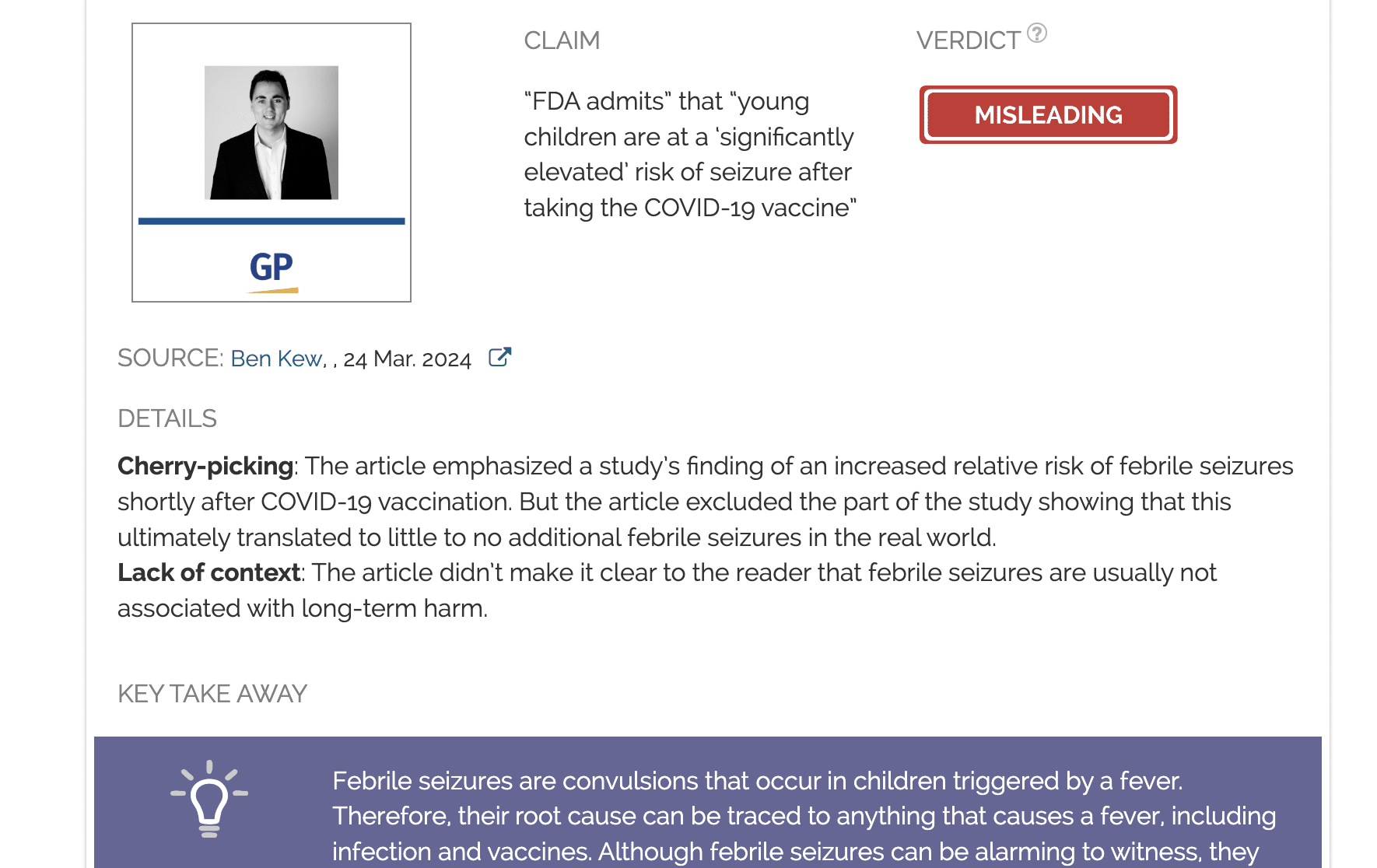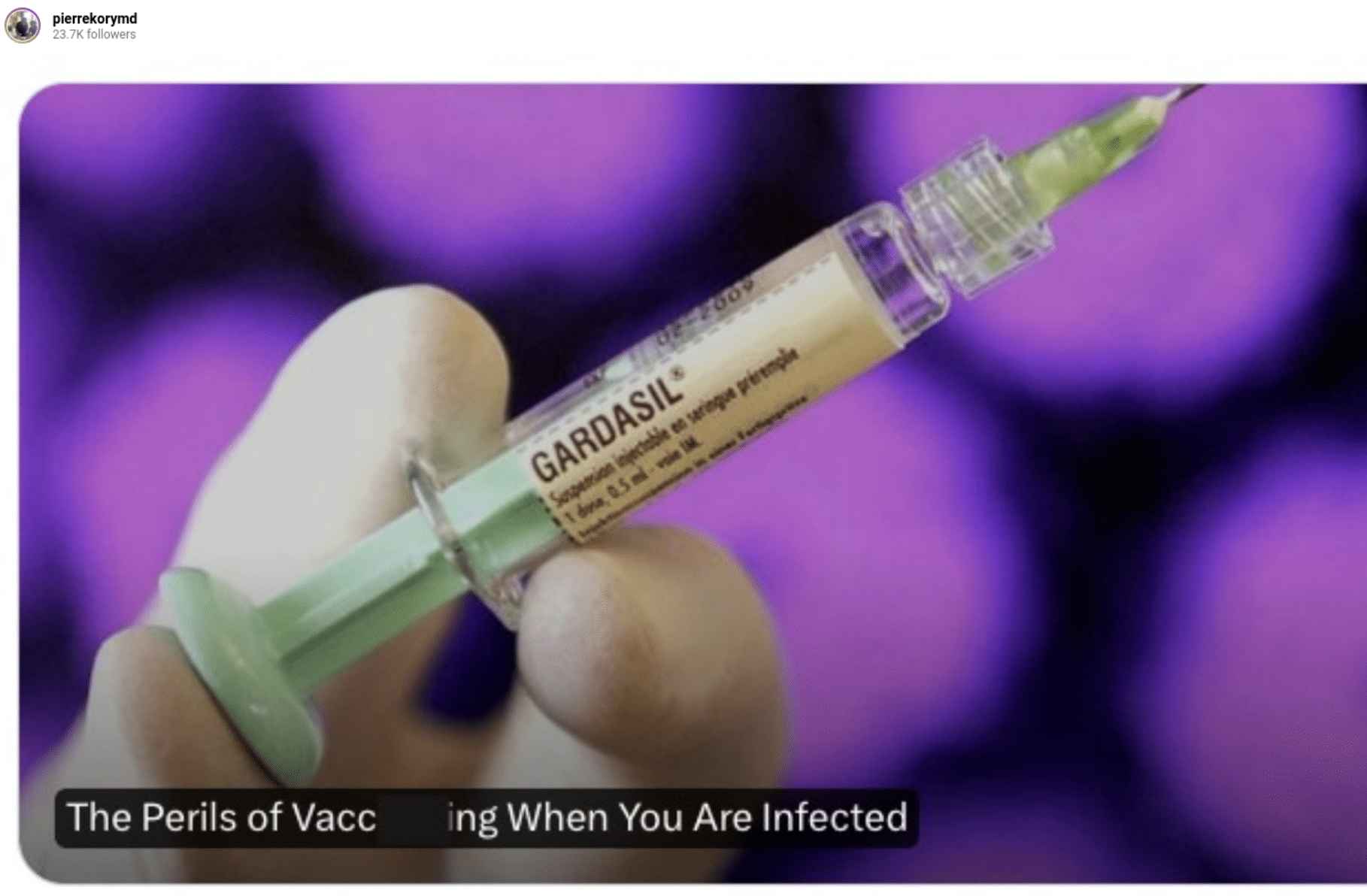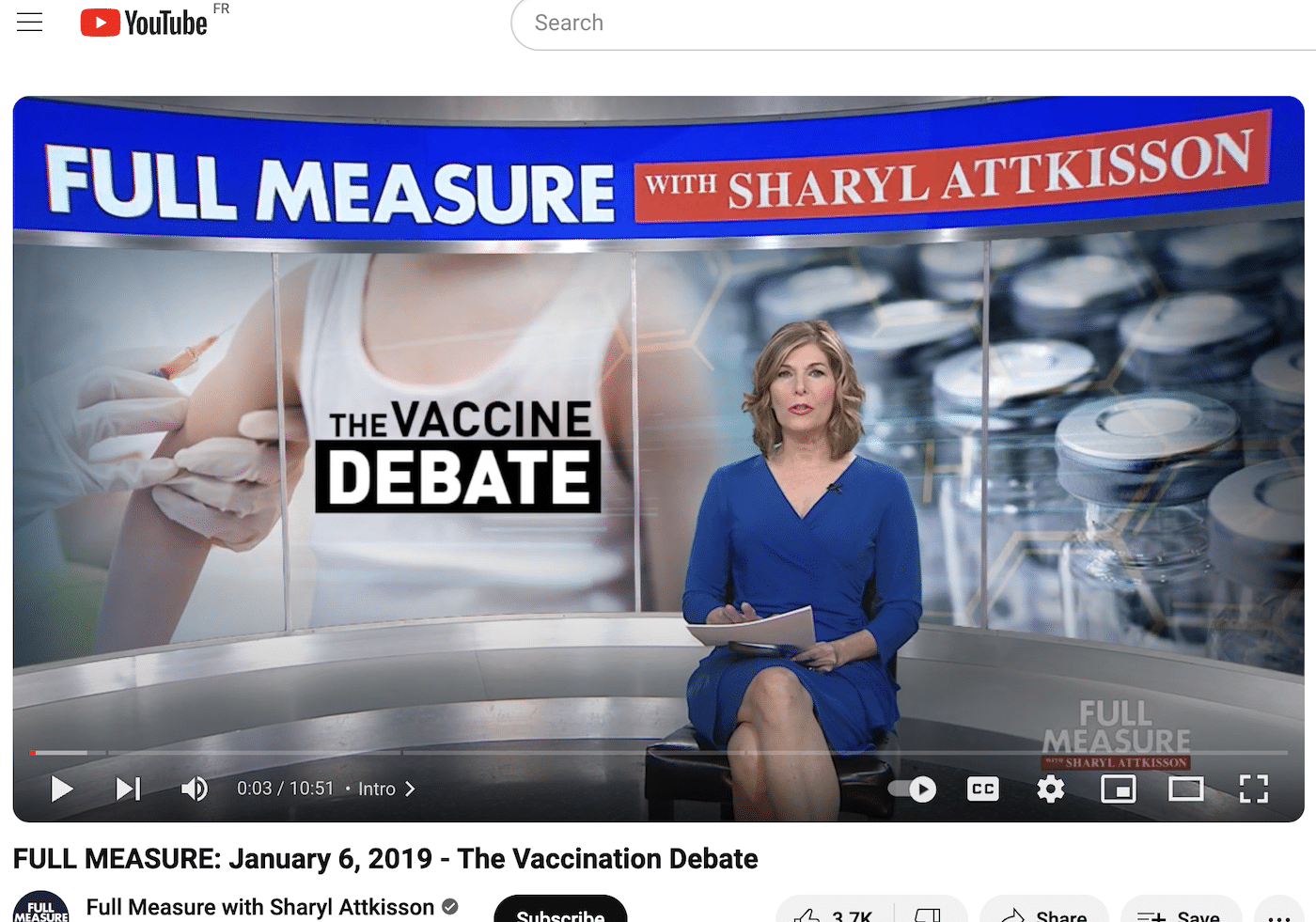- Health
COVID-19 vaccines reduce SARS-CoV-2 transmission and don’t increase mortality, contrary James Thorp’s claim
Key takeaway
The main benefit of COVID-19 vaccines is in reducing the risk of severe disease. They are also safe and the evidence indicates that they aren’t associated with increased all-cause mortality. Furthermore, they limit SARS-CoV-2 transmission, although their effectiveness in this regard varies depending on the SARS-CoV-2 variant and the amount of time elapsed since vaccination.
Reviewed content

Verdict:
Claim:
COVID-19 vaccines are “an unqualified disaster”; they didn’t “[halt] viral spread” and they caused “high morbidity and mortality rates”
Verdict detail
Factually inaccurate: Scientific studies show that vaccinated people are less likely to die from any cause than unvaccinated people. This contradicts the claim that the COVID-19 vaccines caused mass casualties.
Misleading: The fact that COVID-19 vaccines don’t completely stop virus transmission doesn’t make them useless. First, they are effective at lowering the risk of severe disease, thus reducing the human and economic toll of COVID-19. Second, these vaccines still limit virus transmission, albeit imperfectly, and thus are an important tool that can reduce the spread of the disease.
Full Claim
COVID-19 vaccines are “an unqualified disaster”; they didn’t “[halt] viral spread” and they caused “high morbidity and mortality rates”
Review
On 13 December 2023, the Wellness Company shared a post on Instagram, in which gynecologist James Thorp questioned the utility and safety of COVID-19 vaccines. The post claimed that the vaccines were an “unqualified disaster” because they didn’t “[halt] viral spread” while “spawn[ing] unacceptable high morbidity and mortality rates”.
The Wellness Company is a company selling health supplements, whose medical board includes Thorp, as well as cardiologist Peter McCullough and epidemiologist Harvey Risch, all of whom shared misinformation related to COVID-19 and COVID-19 vaccines in the past.
Claims casting doubt on COVID-19 vaccines’ usefulness and safety have been rampant since the beginning of the vaccination campaign. Health Feedback explained on multiple occasions how scientific evidence contradicted those claims. Likewise, the claim by the Wellness Company is inaccurate. We explain why below.
COVID-19 vaccines didn’t cause “mass casualty”
This claim cited the number of deaths occurring in vaccinated people reported to the U.S. Vaccine Adverse Event Reporting System (VAERS) as evidence that COVID-19 vaccines caused “mass casualties”. However, this is a misuse of the VAERS database.
Health Feedback previously explained that VAERS isn’t designed to demonstrate whether a given vaccine caused deaths. VAERS reports alone cannot establish causality between vaccination and a given medical condition, but can help researchers detect early signs of potential side effects for further investigation.
The VAERS website warns: “VAERS is not designed to detect if a vaccine caused an adverse event, but it can identify unusual or unexpected patterns of reporting that might indicate possible safety problems requiring a closer look.”
First, anyone can submit a report to VAERS and the information in the report isn’t verified, as we already explained. VAERS clearly warns users relying on the database about this caveat: “Some reports may contain information that is incomplete, inaccurate, coincidental, or unverifiable. Most reports to VAERS are voluntary, which means they are subject to biases”.
Second, VAERS data alone can’t determine whether an adverse event is the consequence of vaccination. Indeed, the sole fact that event A occurs before event B doesn’t mean that A caused B. Suggesting otherwise is known as the post hoc ergo propter hoc fallacy. Further investigation into VAERS reports is required in order to determine whether there is a causal association.
In fact, multiple published studies showed that unvaccinated people have a higher all-cause mortality than vaccinated individuals[1-3]. Thus, scientific evidence very clearly establishes that the claim has no basis in reality.
COVID-19 vaccines reduce the risk of severe disease
Just as safety belts don’t need to prevent all deaths from car crashes to be a valid protective measure, a vaccine doesn’t need to block virus transmission completely to be useful.
Considering a vaccine that is unable to stop 100% of virus transmission as “a disaster” is a perfect illustration of the nirvana fallacy, in which a valid solution is rejected because it is less than perfect.
Although they don’t entirely halt the spread of the virus, COVID-19 vaccines are effective at reducing the risk of severe disease. This is important because it translates into fewer COVID-19 hospitalizations and mortality. An observational study about the first year of vaccination in the U.S. showed that a 10% increase in vaccination in the country was associated with an 8% reduction in mortality[4].
A group of epidemiologists conducted an analysis for the Commonwealth Fund assessing the impact on public health of the first two years of vaccination. They estimated that vaccination prevented more than 18.5 million additional hospitalizations and 3.2 million additional deaths in the U.S.
Severe COVID-19 and hospitalization also involve a higher use of medical resources. Thus, these epidemiologists also estimated that the reduction in mortality and hospitalization saved 1.15 trillion dollars in medical costs in the U.S.
COVID-19 vaccines reduce transmission, albeit imperfectly
Stating that COVID-19 vaccines don’t halt the spread of the virus is misleading. Similar to the claim discussed in the previous section, it incorrectly takes an “all or nothing” position on vaccine effectiveness, in which anything less than 100% effectiveness means a vaccine doesn’t work.
Firstly, no vaccine exists that is 100% effective. Secondly, it leaves out the fact that vaccination reduced transmission—the likelihood of the virus being transmitted from one person to another—even though it didn’t stop it entirely.
Numerous studies showed that vaccination reduced the transmission of SARS-CoV-2 between people in close contact, such as individuals living in the same household[5-10].
Studies showed that COVID-19 vaccines can reduce virus transmission by two mechanisms[6,11-13]. Firstly, they can reduce a vaccinated person’s susceptibility, which is their risk of infection upon exposure to the virus. Second, the vaccines can also reduce a vaccinated but infected person’s infectiousness, which is their ability to shed and transmit the virus[14].
Vaccination is more effective at reducing susceptibility, with a 20% to 69% reduction in the risk of exposed individuals to being infected. It is less effective at reducing infectiousness, with a 5% to 44% reduction in risk of infecting others.
However, one study reported that the amount of time that had passed since vaccination, as well as the type of SARS-CoV-2 variant, could diminish vaccine effectiveness with regards to susceptibility. By contrast, the vaccine’s effect on infectiousness remained stable. This suggests that the vaccine’s ability to reduce infectiousness was less affected by time since vaccination or the type of SARS-CoV-2 variant than susceptibility[13].
Although the studies mentioned earlier unambiguously showed that vaccination hindered virus transmission, they also pointed out that immunity waning over time and the immune escape of variants substantially limited this benefit.
For instance, Eyre et al. found that the Pfizer-BioNTech COVID-19 vaccine reduced transmission of the Alpha variant by 68% soon after vaccination, but this reduction fell to 50% three months later[5]. The reduction in transmission of the Delta variant was 50% shortly after vaccination, but decreased to 24% after three months.
Results from Prunas et al. confirmed that vaccine effectiveness against transmission was lower against the Delta variant and decreased in the months following vaccination[6].
In summary, COVID-19 vaccines partially reduce the transmission of the virus. Thus, they are a useful tool, alongside nonpharmaceutical interventions such as physical distancing or mask-wearing, to control the spread of the disease.
REFERENCES
- 1 – Xe et al. (2023) A safety study evaluating non-COVID-19 mortality risk following COVID-19 vaccination. Vaccine.
- 2 – Tu et al. (2023) SARS-CoV-2 Infection, Hospitalization, and Death in Vaccinated and Infected Individuals by Age Groups in Indiana, 2021‒2022. American Journal of Public Health.
- 3 – Pálinkás and Sándor (2022) Effectiveness of COVID-19 Vaccination in Preventing All-Cause Mortality among Adults during the Third Wave of the Epidemic in Hungary: Nationwide Retrospective Cohort Study. Vaccines.
- 4 – Suthar et al. (2022) Public health impact of covid-19 vaccines in the US: observational study. The British Medical Journal.
- 5 – Eyre et al. (2022) Effect of Covid-19 Vaccination on Transmission of Alpha and Delta Variants. The New England Journal of Medicine.
- 6 – Prunas et al. (2022) Vaccination with BNT162b2 reduces transmission of SARS-CoV-2 to household contacts in Israel. Science.
- 7 – Anika Singanayagam et al. (2022) Community transmission and viral load kinetics of the SARS-CoV-2 delta (B.1.617.2) variant in vaccinated and unvaccinated individuals in the UK: a prospective, longitudinal, cohort study. Lancet Infectious Diseases.
- 8 – Jung et al. (2022) Transmission and Infectious SARS-CoV-2 Shedding Kinetics in Vaccinated and Unvaccinated Individuals. JAMA Network Open.
- 9 – Braeye et al. ( 2023) Vaccine effectiveness against transmission of alpha, delta and omicron SARS-COV-2-infection, Belgian contact tracing, 2021–2022. Vaccine.
- 10 – Maeda et al. (2023) Effect of COVID-19 vaccination on household transmission of SARS-CoV-2 in the Omicron era: The Vaccine Effectiveness, Networking, and Universal Safety (VENUS) study. International Journal of Infectious Diseases.
- 11 – Martínez-Baz et al. (2023) Effect of COVID-19 vaccination on the SARS-CoV-2 transmission among social and household close contacts: A cohort study. Journal of Infection and Public Health.
- 12 – Lyngse et al. (2022) Effect of vaccination on household transmission of SARS-CoV-2 Delta variant of concern. Nature Communications.
- 13 – Mongin et al. (2023) Effect of SARS-CoV-2 prior infection and mRNA vaccination on contagiousness and susceptibility to infection. Nature Communications.
- 14 – Anderson et al. (2023) Quantifying individual-level heterogeneity in infectiousness and susceptibility through household studies. Epidemics.



